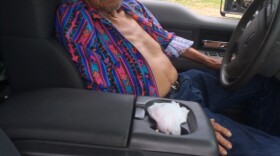
The two tribes on the Wind River Indian Reservation are growing and prospering: the Northern Arapaho is expected to reach 11,000 this year, the Eastern Shoshone is almost 5,000 strong. But while the number of people has been expanding, the number of homes where all those people can live has not.
Over the last few months, Wyoming Public Radio has been investigating the ramifications of the housing shortage on Wind River, looking at how it has led to overcrowding, homelessness, and racial discrimination in nearby communities. In this series, we’ve also examined financial solutions available to the tribes and talked with people are taking a grassroots approach to helping their neighbors find a safe, dry place to sleep.
Part 1: Overcrowded Lives: The First In A Series On The Reservation Housing Shortage
Part 2: Solutions To The Reservation Housing Shortage Blocked By Many Obstacles
Part 3: On Rural Reservations, Homelessness Less Visible Than Elsewhere
Part 4: Native Renters Struggle With Discrimination In Reservation Border Towns
-
The Housing and Urban Development Office has released a large scale study evaluating the severity of the housing crisis in Indian Country. It’s the most…
-
Over the past few months, we’ve been looking at the housing crisis on the Wind River Indian Reservation. The shortage of homes there—and the lack of…
-
There’s a housing crisis going on at the Wind River Indian Reservation in central Wyoming. For its fast growing population of 15,000 residents, there…
-
Overcrowding in homes on the Wind River Reservation is a real problem, as seen in the first story in our “Reservation Housing Shortage” series. In the…
-
The two tribes on the Wind River Indian Reservation are growing and prospering. The Northern Arapaho is expected to reach 11,000 this year, the Eastern…







